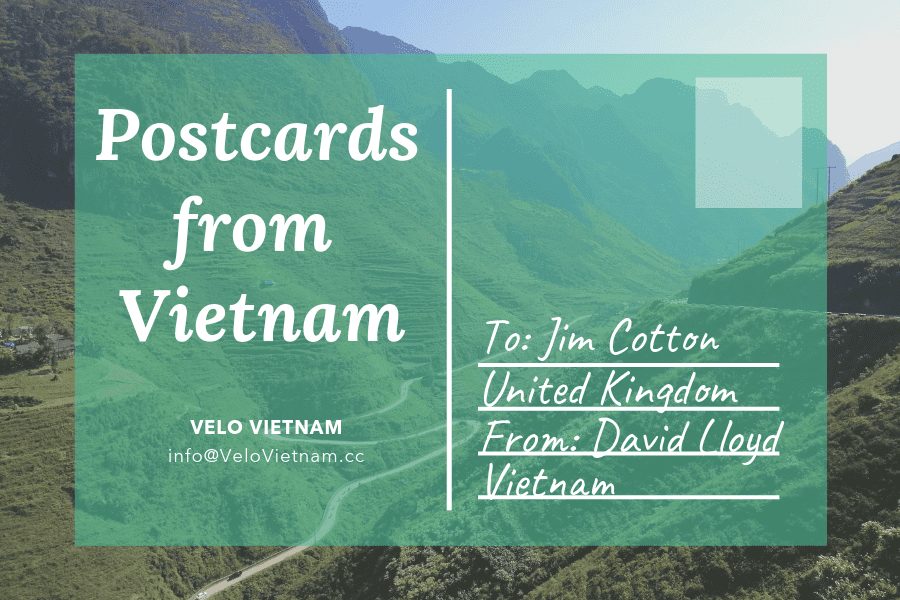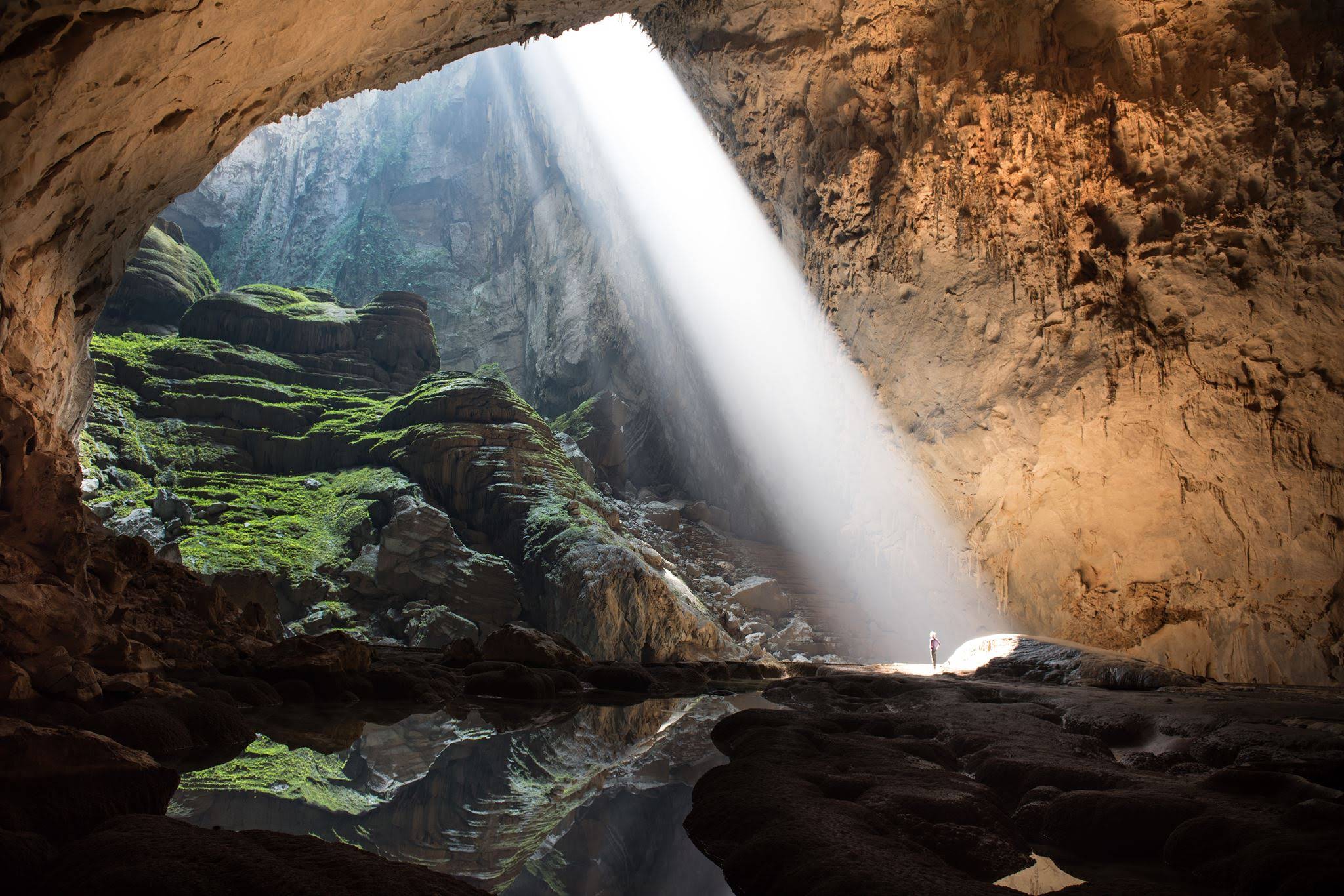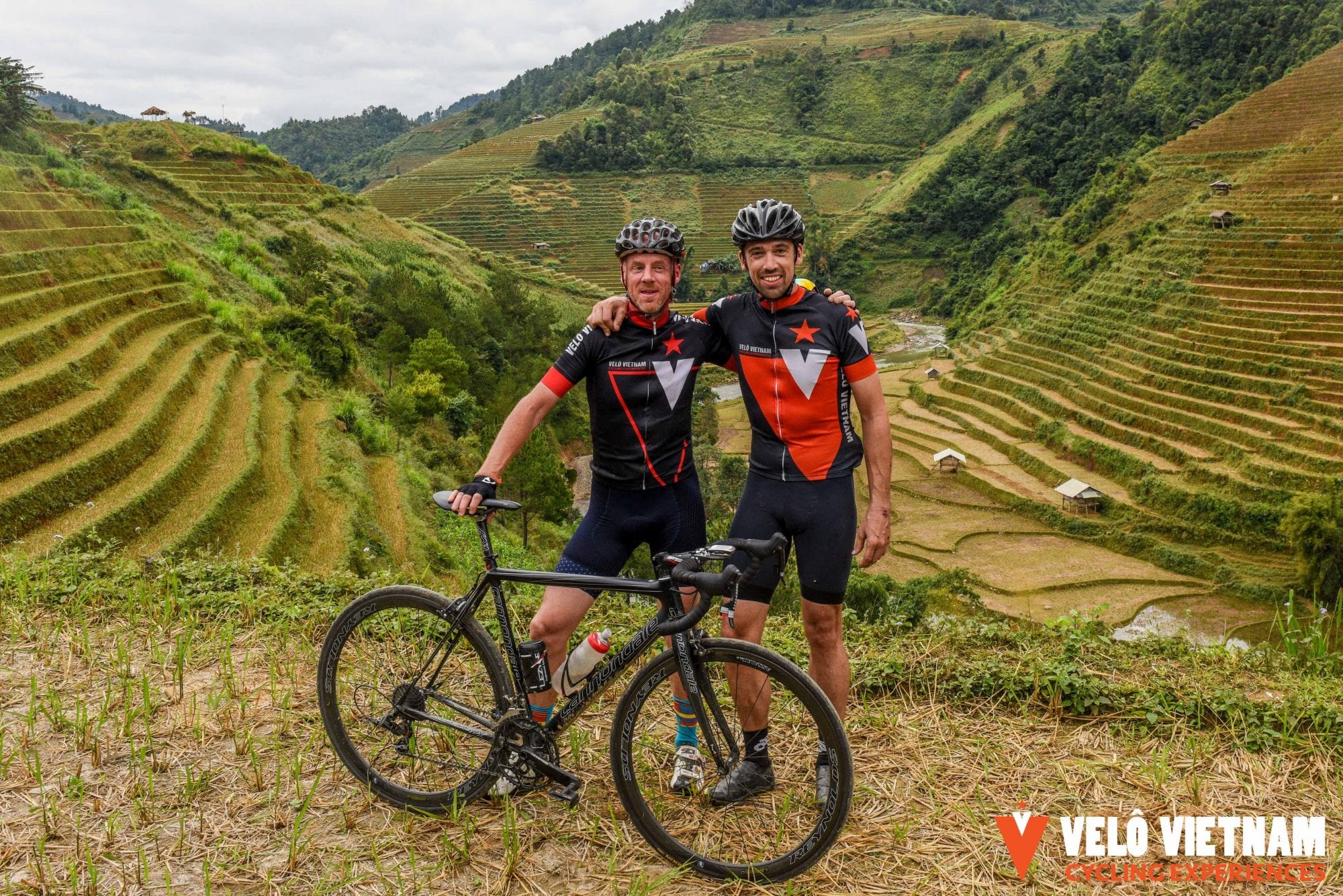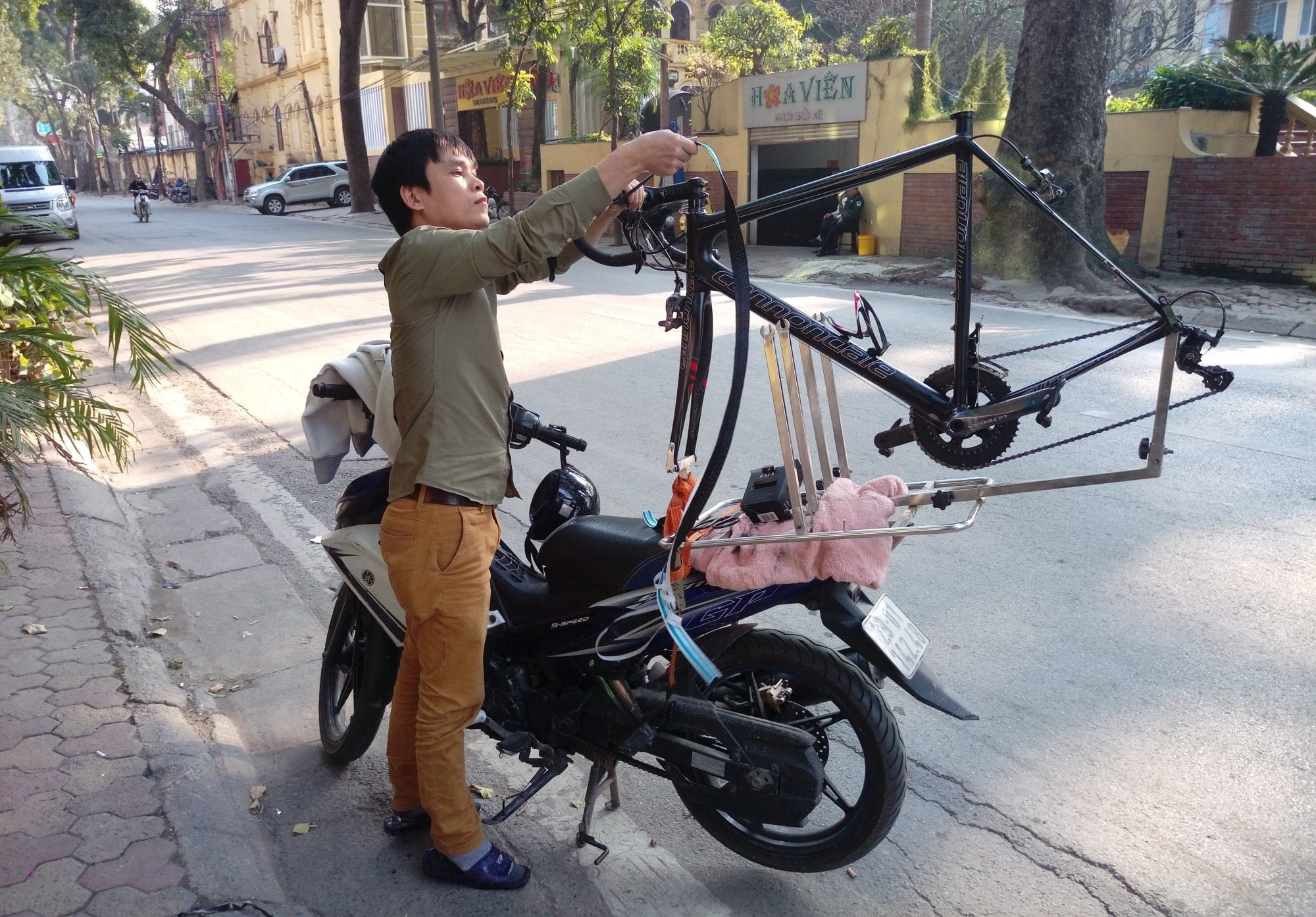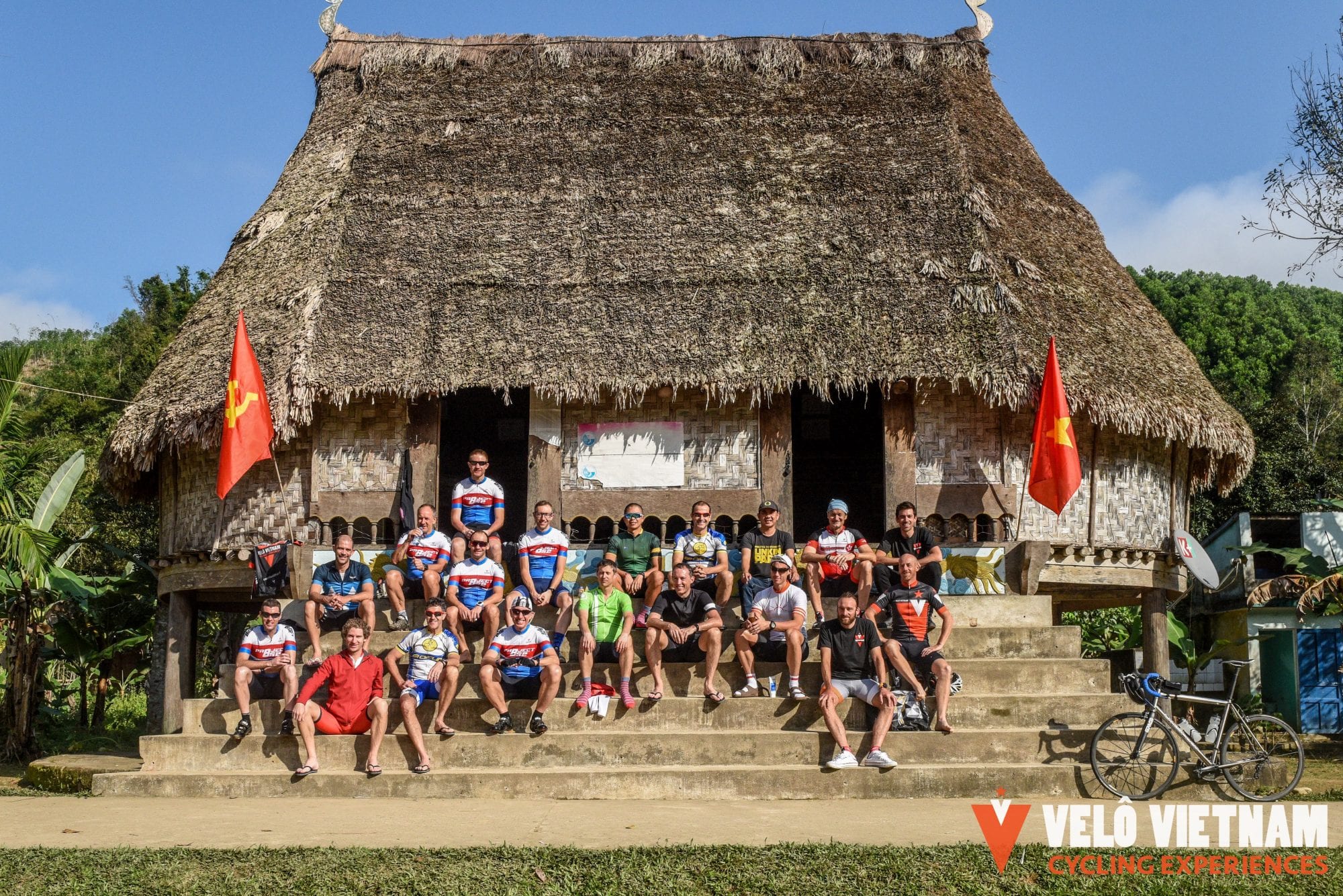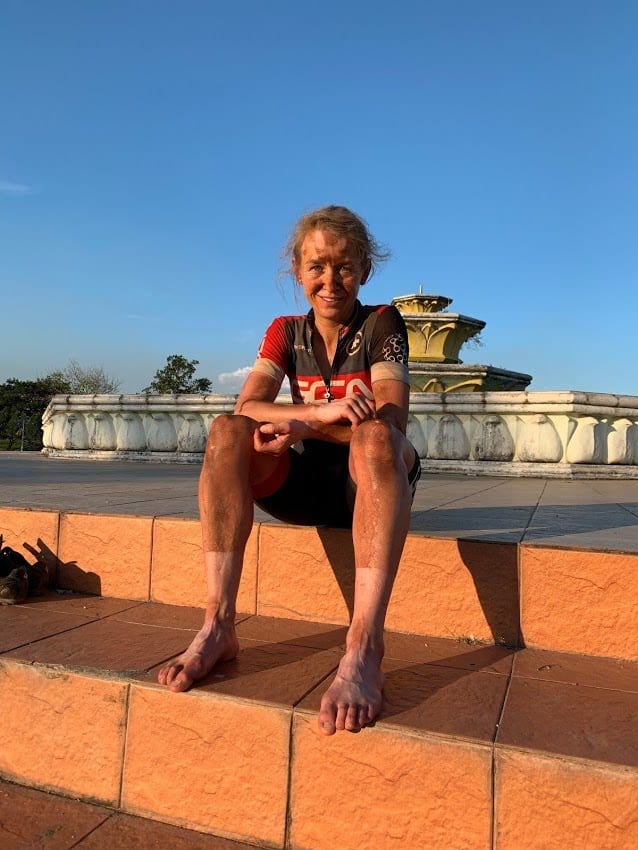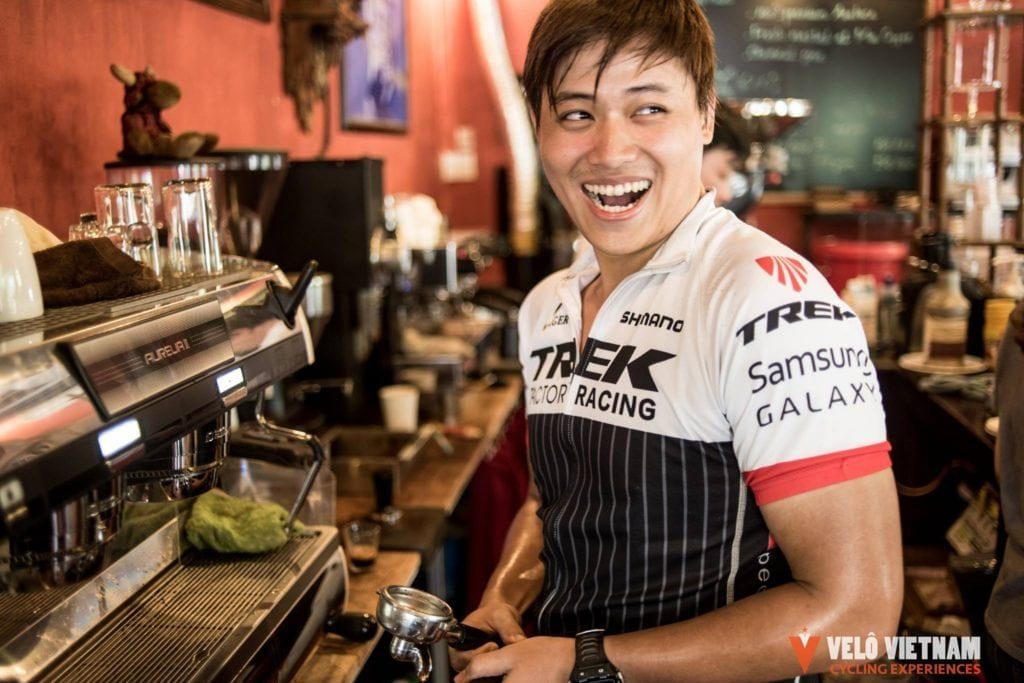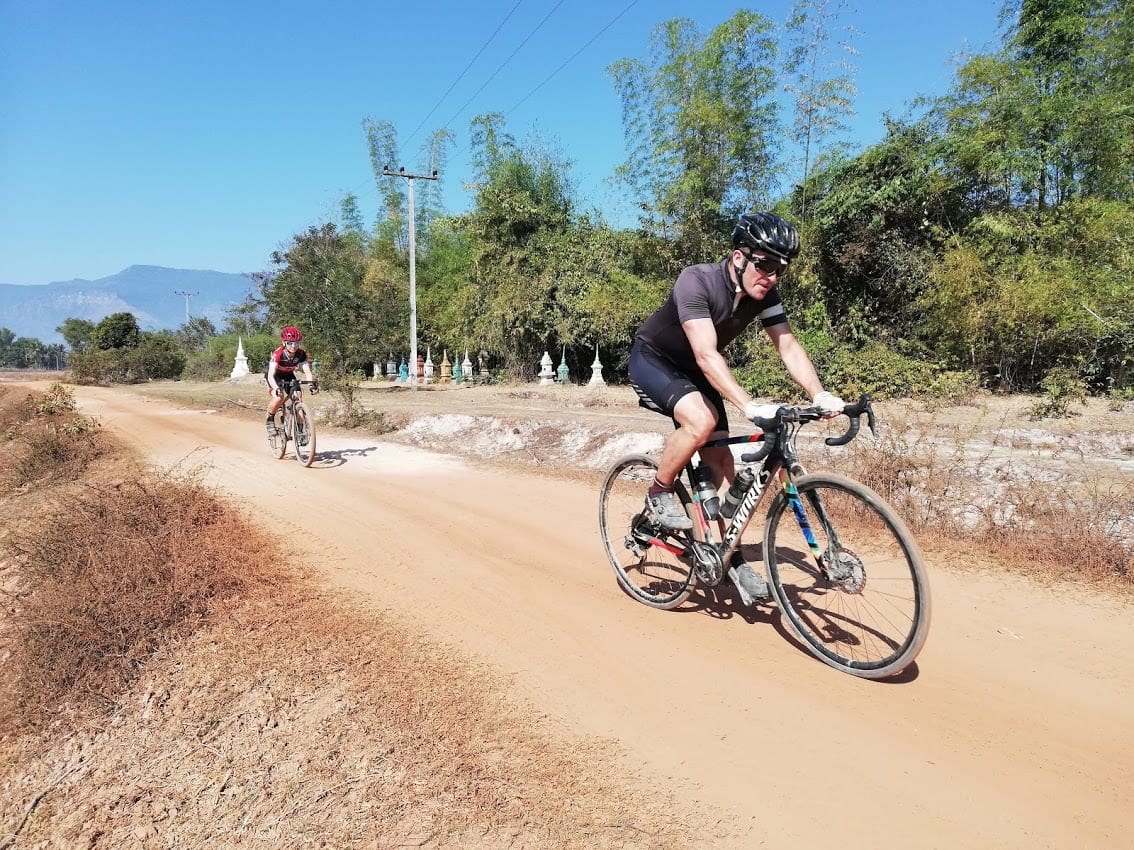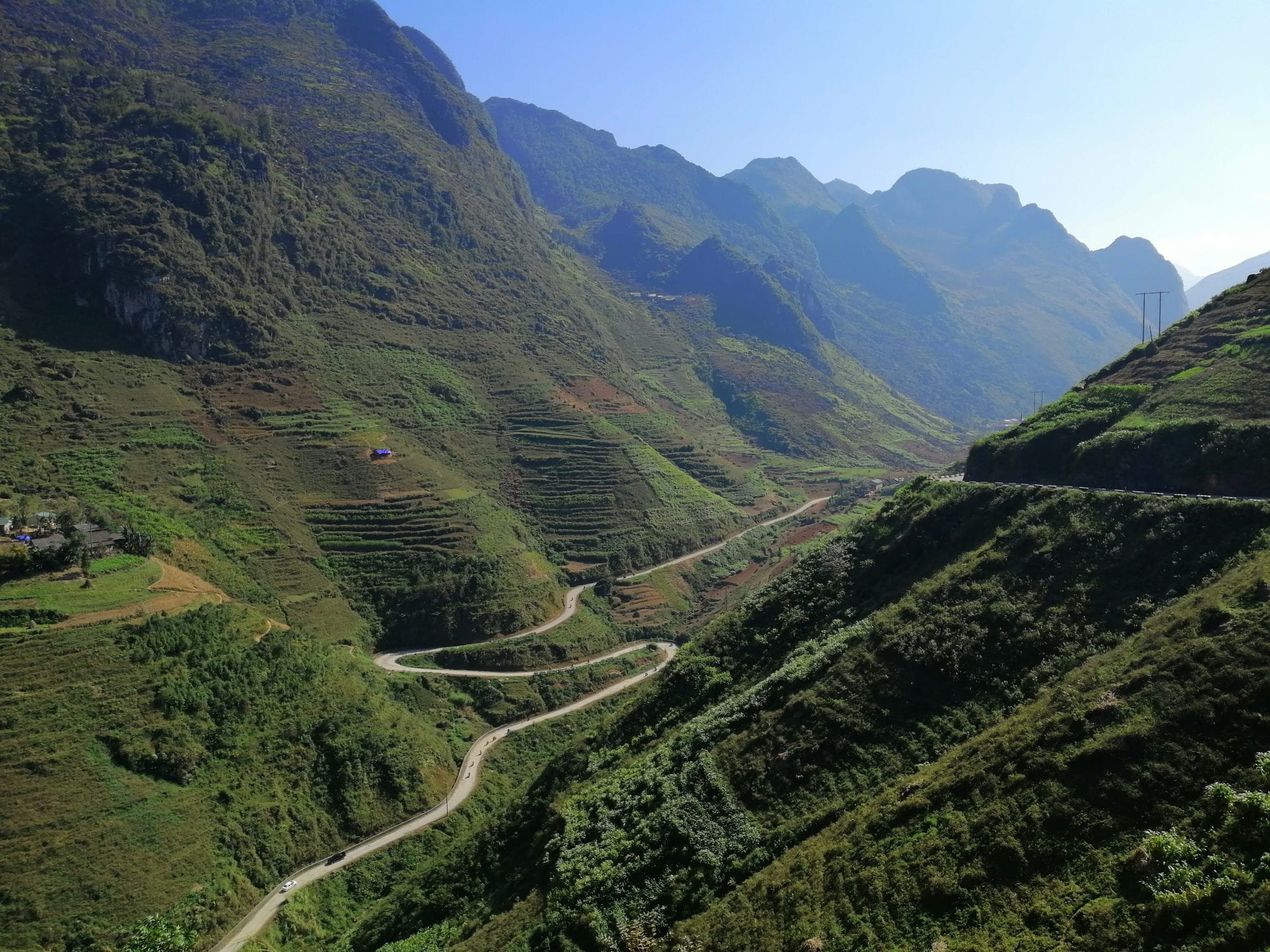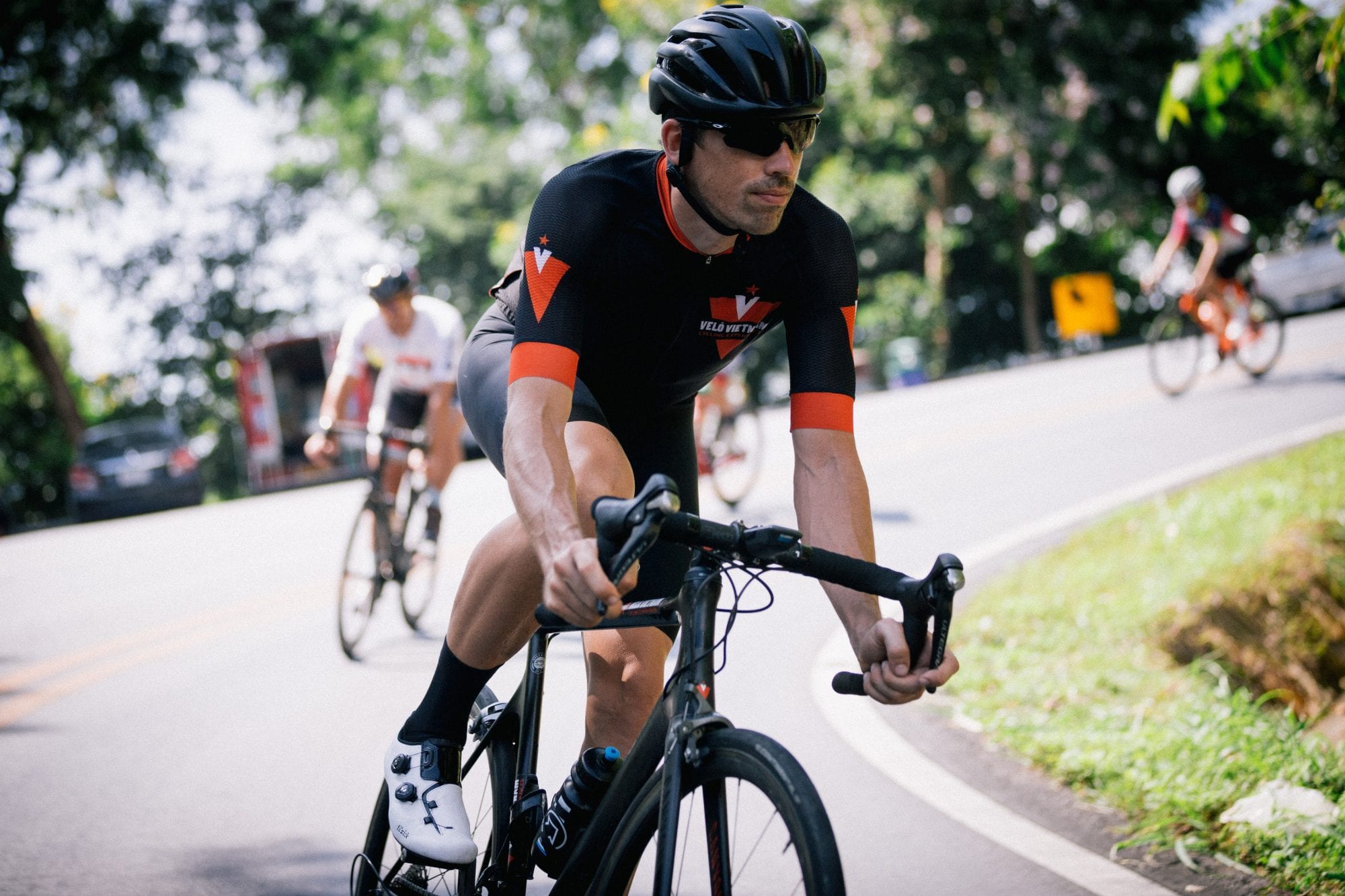Postcards from: David Lloyd of Velo Vietnam
David Lloyd Travel Vietnam 03 April 2019
When someone mentions Vietnam it would be no surprise if your first thought wasn’t ‘cycling’. But let David Lloyd of Velo Vietnam introduce you to some of the epic riding opportunities Vietnam has to offer.
When I was out researching in Vietnam as a writer, I’d always take my bike.
When I first came to Vietnam I was working freelance as a travel writer and photographer, for publications including The New York Times and Travel + Leisure. I also wrote the Insight and Footprint guidebooks on Vietnam and Laos for some years.
The above photograph is Son Doong, the largest cave in the world. This was back in 2014 when it was still off the tourist radar – indeed, when I first updated the Footprint guide on this area the province barely merited a mention. The cave then went onto the NY Times ’50 places to go in 2015’ and the area has changed radically since. This is a graphic illustration of how much Vietnam has changed in my time here.
When I was out researching in Vietnam as a writer, I’d always take my bike. Typically for guidebook work I’d have a driver, but I would give him my bag and ride. That’s how I got to know the roads, and how I realised that more people needed to see them; somewhere along the way I decided I wanted to start a company to make that happen.
I knew I wanted to to do it with someone, but for a long time I didn’t know who. I eventually met my business partner, Ashley (the two of us are pictured above), through a mutual friend. I took him on my favourite ride in the far north and over those three days saw how open he was and how much he knew and loved Vietnam; I realised he would be ideal for the type of company that I wanted to start. That’s how it all started, on the road, back in 2015.
I’ve always ridden bikes from when I was a kid. Back when I worked in London I would ride everywhere in town as well as riding mtb and road outside the city. I also always spent as much time as possible in the mountains whether that be on a bike, mountain running or white-water kayaking in North Wales.
When I moved to Vietnam there was no mountain (fell) running or kayaking scene, so all the focus of getting into the mountains was being on the bike.
I got the rack from a fellow rider. When I saw it I asked where to get one and he promptly sold me his for next to nothing and said he could get another. That sums up the friendliness of riders here perfectly.
The above photo is related to my first Everesting which was here in Vietnam. I’ve now done three, including one this week. For the first, Ba Vi Mountain, I used to ride out to the base of the climb on the Yamaha pictured here with my bike on it and do multiple reps. I got the rack from a fellow rider. When I saw it I asked where to get one and he promptly sold me his for next to nothing and said he could get another. That sums up the friendliness of riders here perfectly.
The other two Everestings are Wrynose Pass in a head wind which I am sure is the hardest thing I will ever do on a bike and also a climb local to my home in Hanoi. That one is also ludicrous, but just on the right side of insane when compared to Wrynose Pass.
The riding in Vietnam is incredibly varied; in the far north, near China, we have grand 3,000 m mountains with picture-postcard golden rice terraced valleys and stilt house minority villages below. These have passes going over them that rival the Alpine greats in terms of grade and distance, peaking at around 2,000 m with the longest at over 30 km.
The difference here is the Strava leaderboard will be 30 people, not 3,000+ so there is a very definite sense of pioneering.
There’s beautiful tarmac everywhere, but loads of gravel and trail too.
We also ride a lot in Central Vietnam where there are epic climbs through ancient jungle where you’ll see nobody – no cars and no motorbikes on some stretches where riders can also peer across the border into Laos.
here you can ride climbs with mountains on one side and stunning white sand beaches on the other.
The beaches and coast roads are a great part of the riding in Central Vietnam – here you can ride climbs with mountains on one side and stunning white sand beaches on the other. And after the ride you can enjoy food right on the sand, so rest days aren’t bad here either!
Further south we create rides and camps from the coast up to Dalat – actually my all time favourite descent is down there. There’s also another 30 km beast of a climb to take on in this area. In the highlands around Dalat there is a very European feel, with pine forests and a different, cooler climate to the rest of the country. It’s also the capital of coffee in Vietnam so riders tend to enjoy that.
In the far south it’s largely flat, so we don’t run tours there unless people are specifically looking for it.
Almost all of our tours are bespoke – they’re always a group of friends or clubs who we build the exact tour for based on their brief. We don’t just ask them what sort of riding they’re after – the distance and elevation etc – but we also find out whether they want a focus on the rich culture and food experience available.
Some want the cultural aspect and to learn, whereas some want to simply ride hard and get solid training done.
We can cater for both – Ash is a cultural anthropologist specialised in Vietnam and as I said, my background is travel journalism, so we are always keen to share our passion for the nation if people want to know more. However, if they don’t fancy hearing about it in the middle of a massive climb, we definitely get that!
For those that want to train, we set KOM sections where guests can race each other and have a competitive element. When we do this, we note their times and at dinner give out awards. Often these riders go and smash each other up every day, which is awesome fun, but knackering for us having to keep up and look after them. I’m thinking of a ride like ‘Project 852’ (a group based in Hong Kong) here – those guys leave us wrecked after every camp!
One tour we had was with a celebrity chef, and so whenever we rode past somewhere with interesting looking food we’d go and check it out.
For other groups the dynamic is about enjoying the ride. One tour we had was with a celebrity chef, and so whenever we rode past somewhere with interesting looking food we’d go and check it out. These trips are equally fun for us as we love food and sharing our favourite dishes. Although these groups are less hardcore they’re still knocking out around 100 km with a load of big climbs every day – it doesn’t become just an easy bumble around.
Emma Pooley (Olympic Silver Medallist, World Time Trial Champ, GCN presenter, amongst many other things and pictured above) got in touch with us having been referred to us by a friend who’d been on a trip.
Her requirements for a tour were simple; she said she’d be happy as long as there were hills and a remote, adventure feel to it. We’d been reconning a route that was from Vietnam, through Laos, and back through Vietnam again. We warned her we’d not really finalised the route, so there would most certainly be an adventure element. She loved the idea.
She wanted to enjoy the pleasure of being on the bike and taking it all in.
We took Emma and Philippe on roads that in some cases had totally changed from the first time we’d been. It was a seriously big tour, 16 days and 20,000 m+ of climbing, a lot of which wasn’t on tarmac. It was just Emma, Philippe, and Ash that rode. You could tell she was superstrong, but she wasn’t going out to smash it. She wanted to enjoy the pleasure of being on the bike and taking it all in. That said, she’d go running most mornings, in some cases knocking out a half marathon, or intervals, before she got on the bike…
Everyone in Vietnam is rightly proud of their food, and they love to show it off. I think that’s rubbed off on us quite a lot, and we love to incorporate some exploration of the cuisine on the trips. Whichever region we’re in, we try to expose guests to that type of cuisine, and if the guests are really interested in this side of things, we sometimes go into the kitchens as the meals are prepared and learn about the ingredients.
Vietnamese food is excellent ride food as well – loads of rice and noodles for carbs and plenty of veg and fresh herbs for all the nutrients. And one of the beauties is that you get to explore so much variety – we’re moving every day and each region’s food can be so different.
The on-bike options are awesome as well. When people stop and need a fuel up, they can have an energy gel or bar, or fresh mangoes and pineapples. We always have a guide with us who’s handy with a knife, so we can slice up these amazing fruits in front of people and they have it as fresh as it can possibly be.
There’s a huge coffee scene in Vietnam – it’s the second biggest exporter in the world after all. Vietnamese coffee is generally served with ice and condensed milk, which is amazing on the bike, as it’s sweet and cool. It almost feels like an energy drink.
In the more populated areas such as Hanoi and Danang, there’s a lot more artisan style coffee shops using Vietnamese beans, serving coffee in the Italian style, with espressos etc, so we always try to get people in there too.
We also always bring an aeropress and a few different types of local beans on our tours too, for if people want a more espresso style coffee even when we get remote.
We offer whatever type of accommodation people want, whether that be a five-star hotel with infinity pool, or an authentic local hut (see the seventh image in this article). Most people want a bit of a mix, especially as the really luxurious hotels are very affordable here. The above picture is an eco-lodge, listed on National Geographic, which is really quite a special place to stay. The problem with taking people here is that they never want to leave.
The problem with taking people here is that they never want to leave.
In the far north, where it’s generally very remote, there’s less of that top-end offering, however, we can still offer the more luxury style housing with the ethnic minority people. In Vietnam, there are more than 50 ethnic minority groups, so if you come on a trip, you can stay with a different minority every night and experience totally different ways of life every time.
When we go on the more remote trips and people are staying in huts, we make sure to keep the luxuries and added extras – so although those places won’t have in-house masseuses, we’ll bring our own with us, for example.
We love the gravel trend and think it could become a big thing for us; we get loads of enquiries about it. We’re building gravel tours now as people are making enquiries on a weekly basis.
The trip we did with Emma Pooley in the north and through Laos was our first tour incorporating gravel. So, we now offer gravel options up in the north, where Emma was, and we also can add gravel into tours in central Vietnam; some of these in areas that would otherwise have been totally inaccessible to people on road bikes.
These gravel-focussed tours are coming on our website soon. We’re super-excited to be able to start exploring the gravel and off road – some of which I know from my trail run mountain bike race organisation up north with Topas where I am the Director of Sport.
In late 2018, we researched a new super-hard mountain event in the north that we’re initially running on the road later this year, and we’re also going to expand on this to do a gravel version in that same region.
This is in an area I’ve visited many times before, but I’d never strung it together as a four day ride in this way. It’s basically everything I would want if I was going to do a tour/event as a guest. Four monstrous days of beautiful, but really hard mountain riding, with a competitive edge. Each day is likely to be around 140 km and 3,000-3,500 m of climbing.
Four monstrous days of beautiful, but really hard mountain riding, with a competitive edge.
This year is going to be very much a ‘pilot’ for the four day event that will come in 2020. We’re looking to cap it at around 20 riders, most of whom have already got their names down.
I think it will remain fairly underground and small for the first few years. If and when it gets bigger it will likely move to a different parcours. I like the idea that the people that jump on in the early days will get to experience something special that won’t last forever.
About David Lloyd
Originally from England, David has lived in Vietnam for eight years. With a background in travel journalism, he is founder of Velo Vietnam and Director of Sport at Topas, owner of Vietnam Trail Series. He races bikes locally for Vietnamese team Tayho Cycling and overseas in Velo Vietnam colours. David lives in Hanoi with his family.
-
Velo Vietnam
Visit site
